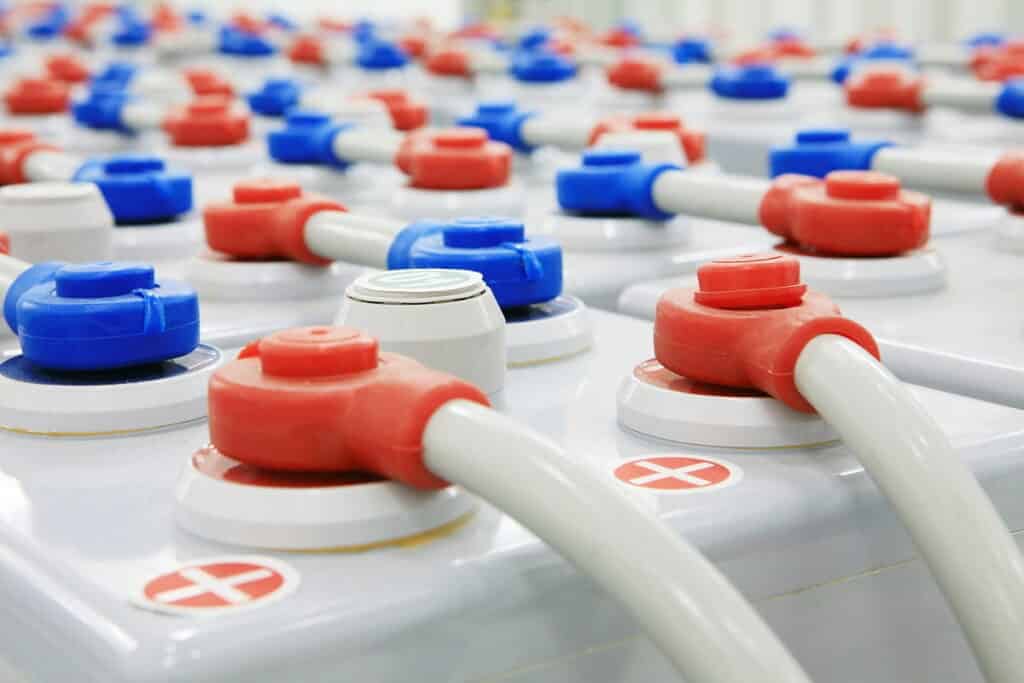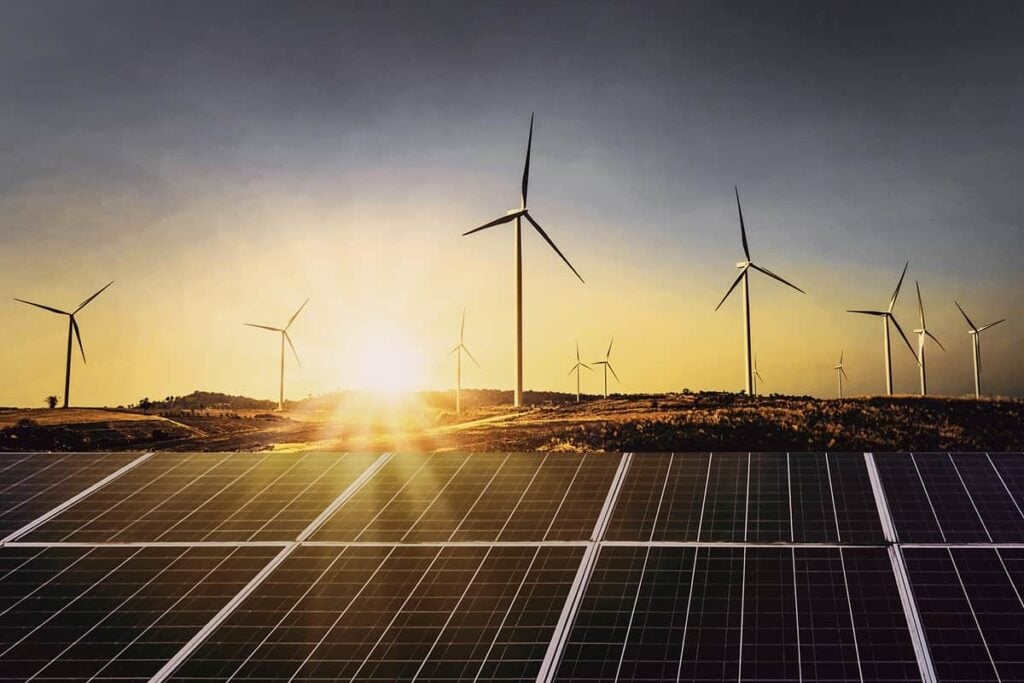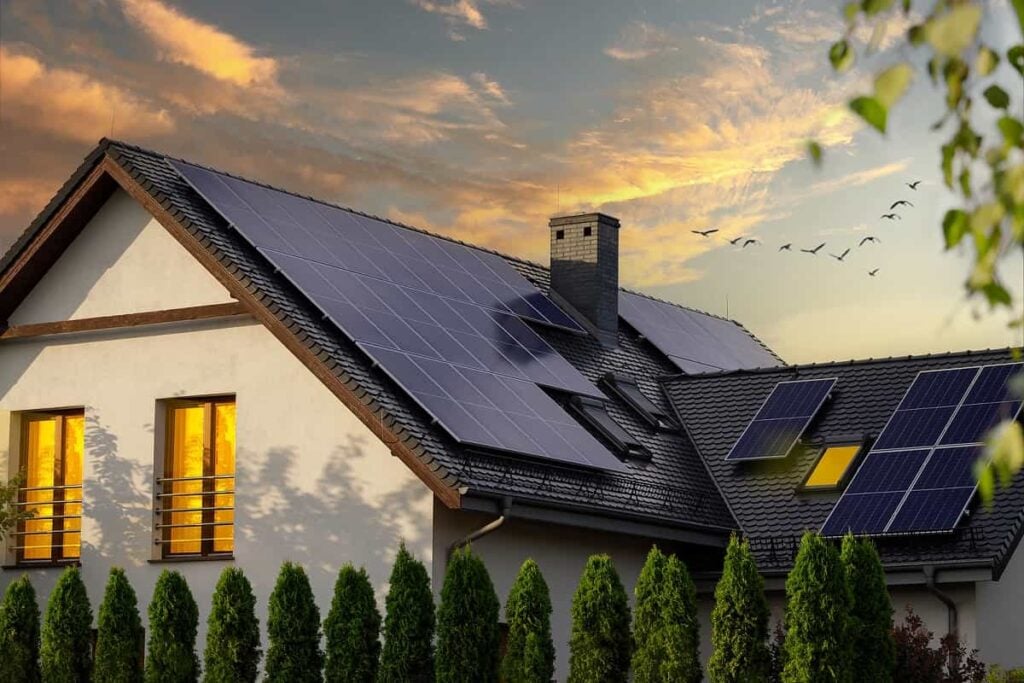5 Energy Storage Systems for the Electrical Grid
Table of contents

Most of our articles about green technologies often end with the same complaint: Where are the greenbacks? Profitability in the low-carbon, environment-first economy remains largely elusive. For example, everyone is suddenly interested in carbon capture after Elon Musk backed a $100 million XPRIZE for the best solution for mitigating emissions. But, as we’ve pointed out before, the technology is still far from being economically feasible without heavy subsidies and incentives (like a $100 million XPRIZE). While wind and solar renewable energy remain the backbone of the green economy, even these technologies continue to require environmentally friendly policies and regulations to prop up installations. A paper published last year argued that for solar and wind to become economically sustainable, we will need to deploy new grid technologies such as energy storage systems.
The Value of Energy Storage Systems
Why are energy storage systems for the grid important? Simply put, storage allows energy produced by renewables (as well as good old-fashioned fossil fuels) to be saved at times when prices are low and sold when prices are higher. Another advantage specific to renewables is that the power generated by solar and wind is highly variable, so it’s important to capture and store energy when the sun is shining and the wind is blowing. Storing energy also extends the life of energy infrastructure.
In addition, many energy storage systems are maturing and economizing far more rapidly than technologies like carbon capture.
Types of Energy Storage Systems
Last year, we profiled three energy storage companies that went public through reverse mergers with special purpose acquisition companies (SPACs). The article noted that almost all energy storage systems today use pumped hydroelectric storage (PHS), which involves shifting water between higher and lower reservoirs. Another energy storage system that we wrote about in the past is compressed air energy storage (CAES), which as the name implies, uses compressed air to store energy.
While both PHS and CAES are large-scale technologies with discharge times of tens of hours of power for up to one gigawatt (GW), they are geographically limited. Battery-based energy storage systems can be deployed anywhere. The main drawbacks are that discharge times are short-lived and capacity is less. The most common are lead-acid, nickel-based, sodium-based, and lithium-ion. The last is one of the fastest-growing energy storage technologies due to lithium’s high energy density, high power, near 100% efficiency, and low self-discharge, according to a report out of the University of Michigan. There are a number of other energy storage system technologies in various stages of maturation:

There is certainly plenty of capacity for startups in the energy storage market. In 2020, the United States had just 23 GW of energy storage capacity compared to 1,100 GW of total installed generation capacity, according to the Department of Energy (DOE). In other words, only 2% of the energy produced in the United States is capable of being stored today. In California, which leads the nation in energy storage projects, the Golden State electrical grid is estimated to need 12 GW of energy storage for solar as it begins to replace 9 GW of natural gas generation over the next few years, the DOE reported.
Let’s take a look at five startups that could help generate additional energy storage system capacity in the future. The list is based on companies with grid-related technologies that took in funding this year, according to Crunchbase.
Leading with Lithium-ion
Way, way back in 2014, we covered 24M, a Boston area startup that was trying to commercialize black goo flow batteries. The 11-year-old company has now raised nearly $95 million in disclosed funding, including a $56.8 million Series E just a few days ago. The round was dominated by Japan-based companies and venture funds, such as Fujifilm (4901.T), Kyocera (6971.T), and Itochu Corporation (8001.T). Kyocera is a leading company in ceramics technology, and we’re not talking about the stuff at your local First Friday art walk. Itochu is a Fortune 100 company with annual revenues of $100 billion and a history that dates back to the 1850s.

Spun out of MIT and founded by one of the leading researchers in energy storage material science, 24M has created a semi-solid lithium-ion battery cell with an energy density reportedly exceeding 350 watt-hours per kilogram. Compare that to current lithium-ion battery technology of up to 256 Wh per kilo. The company’s SemiSolid manufacturing platform mixes electrolyte (where the chemical reaction occurs) with active materials to form a clay-like slurry with unique attributes. 24M claims the process eliminates a significant amount of inactive materials and capital-intensive processes like drying and electrolyte filling. That makes the battery cells cheaper to manufacture by more than 50%. In addition to stationary storage, like grid electricity, and mobile applications such as electric vehicles, 24M is also targeting the aviation market where electric airplanes will need much lighter, energy-dense batteries to get off the ground.
V is for Vanadium
While lithium is the preferred metal of choice for most battery-based energy storage systems, it’s not limitless. There’s an estimated 17 million tons of the soft, silvery-white metal in global reserves, according to the U.S. Geological Survey. That might sound like a lot until you think about all of the other types of applications, especially electric vehicles, which require more than 20 pounds of lithium each. Standard Energy out of South Korea thinks it has developed a process for making batteries using vanadium, a hard, silvery-grey metal. Founded in 2013, the battery startup has raised $14.8 million, with nearly $9 million coming from a Series C from SoftBank (9434.T) in April.

While not as energy dense as lithium – meaning you probably wouldn’t use it in electric vehicles – vanadium is safer and easier to source. Instead, the company believes its vanadium-ion battery is ideal for energy storage systems that serve the grid or other large-scale applications such as EV charging stations.
The Zing in Zinc
Another alternative to lithium that companies are investigating is zinc. For instance, EOS Energy (EOSE), one of the companies highlighted in the aforementioned article on energy storage SPACs, has developed a zinc hybrid battery with up to 12 hours of discharge time that can last for up to 15 years. It’s also recyclable and doesn’t require rare earth metals. A Canadian startup, e-Zinc, is developing its own battery using the cheap and abundant metal. Founded in 2012, the company has raised $10.2 million, mainly through grants, but just raised about $1.9 million in a venture round back in January. The battery’s simple design locates the storage space within the same electrochemical cell as the charging and discharging electrodes, meaning less material and expense in manufacturing, among other advantages.

e-Zinc is promising much longer discharge times compared to lithium-ion batteries – up to 48 hours. That capability, Greentech Media reported, is especially appealing to remote regions or island nations where renewables are cheaper than imported diesel.
Update 04/09/2022: E-Zinc has raised $25 million in Series A funding to establish production capabilities for its zinc-based long-duration energy storage tech. This brings the company’s total funding to more than $35.2 million to date.
Energy Storage Heating Up
Let’s completely forget batteries for a moment and talk about thermodynamics, which is at the heart of an energy storage system developed by another Boston area company called Malta. Incubated at X, the moonshot factory for Alphabet (GOOGL), the company was launched in 2018 with a $26 million Series A led by Breakthrough Ventures, the billionaire feel-good venture fund that probably now wishes Bill Gates wasn’t the poster boy for the green economy. Malta added a $50 million Series B in February to bring total funding to $76 million. Its pumped heat energy storage system is based on existing technologies but employs a novel design developed by a Nobel Prize-winning Stanford University physics professor named Robert Laughlin.

The system stores electricity either directly from a power plant or from the grid by converting electricity into thermal energy. Heat is stored in molten salt (also a component in advanced nuclear technology applications), while the cold is stored in an antifreeze-like solution that employs infrastructure commonly used in the liquefied natural gas industry. The system operates like a conventional power plant: When electricity is needed, the thermal energy powers a heat engine to produce energy. Malta announced just this month it would team up with Duke Energy (DUK) on a pilot project to convert retiring coal factories into long-duration energy storage systems by integrating Malta’s technology platform.
Software Solutions
Hardware is hard, as the saying goes, and software comes with much better profit margins. One area drawing investor attention is battery management systems. Founded in 1989 as a contract manufacturer, Powin Energy Corporation out of Oregon now designs and installs complete energy storage systems for the grid, with an emphasis on the software. Powin raised $100 million in February from a couple of private equity firms and turned over controlling interest of the company in the process. Total funding to date is about $127.5 million. The company outsources the lithium-ferrous-phosphate battery cells used in its energy storage systems. The secret sauce is in the StackOS software.

The startup has installed about 600 Mwh to date, but reportedly has 2 Gwh of storage capacity on the books for 2021. That’s about 10% of U.S. total energy storage capacity.
Looking to the Future
The market for energy storage systems is charging up. While we limited our list to startups that took funding so far this year, there are plenty of other companies developing really interesting technology. For instance, there’s Energy Vault, a Swiss startup that has raised $110 million for a gravity-based energy storage system that uses the principles of physics from pumped hydro but replaces the water with custom-made composite blocks in a Tetris-like tower.

And investors just eat this stuff up. We’ve seen a lot of interest from our readers over the years in energy storage technologies such as flow batteries or compressed air energy storage, but where’s the traction? Funding keeps pouring into grid energy storage, yet wide-scale commercialization is always just around the corner. Dams have worked pretty well for storing energy so far, and it remains to be seen if technology can change that. For right now, it’s lithium-ion batteries taking the lead.
In 2020, the U.S. went beyond 1 GW of advanced energy storage installations for the first time ever (in other words, energy storage that’s not pumped hydro). Nearly all of that capacity was lithium batteries, another investment theme we’ve looked at extensively. As we talked about in our article on A Good Battery Stock With Exposure to Multiple Tech Trends, the choice of battery technologies is all about product-market fit. And right now in grid energy storage, that happens to be lithium.
Conclusion
For each company we highlighted above, there are probably another half-dozen or more developing competing solutions in advanced battery systems, gravity-based approaches, thermal storage, compressed air, and more. And let’s not forget about the elephant in the room: In the first quarter of 2021, Tesla’s (TSLA) total energy storage deployment grew 71% from a year ago to 445 Mwh, though sales were mainly driven by the company’s Powerwall residential system rather than its grid-scale Powerpack product. Maybe Musk will realize he can invest that $100 million XPRIZE in his own company’s energy storage system, a much more readily deployable technology than carbon capture.
Sign up to our newsletter to get more of our great research delivered straight to your inbox!
Nanalyze Weekly includes useful insights written by our team of underpaid MBAs, research on new disruptive technology stocks flying under the radar, and summaries of our recent research. Always 100% free.




















Is there anything which removes carbon from the atmosphere more efficiently than plants? Is there anything which stores energy (calories) more usefully than plants?
This certainly is more basic than mechanical energy, nuclear energy, or thermal energy – biologic energy. Can we increase cultivation sufficiently to draw enough carbon from the atmosphere to make a difference? Not if we think in terms of planting a few more trees. We have to enlist the oceans, the deserts, the atmosphere, and design plants to shrug of the season and engage in photosynthesis actively all year long.
Check this out Mark. There’s a company now using satellites to monitor wildfires that produce an INSANE amount of CO2. Instead of planting more trees, why not protect the ones we already have? You kill two birds with one stone – trees stay alive to remove CO2 and wildfires don’t emit CO2.
What you are suggesting is perhaps we use gene editing and the most powerful tech we have – nature – to solve the problem. Absolutely.
I think you may have missed one potential storage mechanism, and that is flywheels. A small mass at high velocity can store a massive amount of energy, very efficiently, with a very high energy density (based on modern technology of low friction perhaps magnetic) bearings and high tensile strength composite materials). This technology had been investigated a bit, over a hundred years ago. The ultimate, of course, would be the ability to apply this at the molecular/atomic level.
In a way, this is how the atom operates.
Do not doubt for a second, that humans will achieve this. We just need some time.
Appreciate that feedback Robert! Took a quick look and there’s at least one company that went bankrupt trying. A startup called Revterra appears to be dabbling in flywheel energy storage. Agree that humans will master our energy storage problems with enough time.
You mentioned atoms. Check this out. If an atom were the size of the State of Utah, the nucleus would be a Volkswagen Beetle parked in the very middle of Utah. In other words, nearly everything around us is actually nothing.
Robert,
Flywheel technology with tidal energy.
Mark
Joe – nothing wrong with curtailing forrest fires – unless you are a Tentpole pine which depends on fires to propagate its cones, what I am inquiring about is the possibility of greening heretofore infertile or hypo fertile areas of the planet, its seas and atmosphere to draw carbon out and store energy in the form of carbohydrates. Mark
That’s a really good point on the Tentpole pine Mark! Wildfires have always been a part of nature, so perhaps us humans shouldn’t be so arrogant to think we’re actually the ones in charge here. Greening infertile areas of the planet with an engineered plant that draws carbon and creates food out of it (carbon to food is a thing) would be great for some of these ambitious youth out there to work on. It’s certainly better than berating people’s lifestyles and expecting them to change, not to mention the billions on this planet that live hand to mouth don’t have much of a choice.
I believe the main contributors of CO2 to our atmospheric for the last ten millennia are agriculture and grazing by domestic livestock. These activities were strongly concentrated in the world’s grasslands. There, vast amounts of carbon, nitrogen, and other nutrients accumulated under fire-driven ecosystems dominated by large herbivores. We now depend on those former grasslands, including the moister types we call wetlands, for food. I believe the abrupt rise in atmospheric C02 since the industrial revolution is as much or more attributable to our conversion of perennial grassland to annual cropland, especially in the Western Hemisphere, than the wood, coal, and petroleum expended to turn the sod upside down. So the most natural method to to sequester carbon is to restore perennial grasslands. Trees and shrubs have shallow root systems that store little carbon deep underground like the fibrous roots of perennial grasses and other grassland plants. The grasslands are where we became bipedal and flourished as hunter/gatherers. Question is can we establish sufficient amounts of perennial grassland to begin lowering emissions of greenhouse gasses without losing the ability to feed our increasing population.
A cursory Google search has the EPA putting “electricity and heat generation” at 25% and “agriculture, forestry, and other land use” at 24%. There’s some great work being done by a firm called Dryad Networks (https://nanalyze.com/2021/08/spacex-internet-of-things/) to monitor forest fires which can certainly help. Interesting fact you raise here on grasslands being better carbon sinks than trees. Who knew? So all these companies trying to sell “tree growing as a service” can be displaced by the first MBA who takes “grass growing as a service” and runs with it. Any idea if anyone is working on that?
Thank you for the very insightful comment.
Hello, there are MBA’s working on grassland/rangeland restoration at LordoftheTrees.ai Also, the biomass in trees is an efficient carbon storage mechanism as long as the wood is not incinerated. The impact of the forests’ and their neural root and fungal networks cannot be ignored either as nature’s longs and thermostat.
Thank you for posting that Don. We wonder who is paying the bills here? Grassland and rangeland restoration sounds like a great thing for the planet but where’s the ROI for investors? The world’s problems can be solved through technology but it won’t scale if it needs subsidies. We’d be curious to hear more about the business model and how this translates into lots of profit.
On that topic, one firm we like in this genre is Dryad Networks which detects forest fires using IoT connectivity. https://nanalyze.com/2021/08/spacex-internet-of-things/ Add up all the land that burns globally in an average year and we’re looking at up to 13 billion metric tons of additional carbon in the atmosphere annually (out of an estimated 50 billion metric tons in total). By detecting fires early we reduce the resources needed to monitor for them and fight them, something that creates efficiencies and is a business model that will probably be able to sustain itself without subsidies.
Thank you for the comment!
Eos Energy fell a lot: from $10 in 2020 to $1.53 now. That is -85% !
They keep growing revenue, but their net loss is also growing fast and is around 10 times larger than revenue ..
That may explain falling share price ..
Indeed
EOS is going to have Q3 2022 results on Monday – 7th Nov 2022. Something to watch ..
EOS better have some serious revenues coming in!